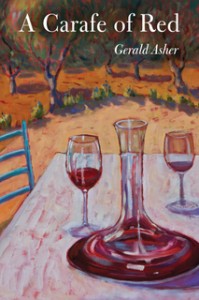A Carafe of Red
| Title of book: | A Carafe of Red |
| Author: | Gerald Asher |
| Publisher: | University of California Press |
| Publication date: | 2012 |
| ISBN | 978 0 520 27032 9 |
| Pages: | 280 |
| Price: | £14.95 |
 This is a collection of essays, snapshots of Asher’s wine writing from the 80s and 90s, almost all in Europe. These short stories, languid tales of wine and history and culture, have remarkable relevance, even insight, for today. For anyone who’s joined the industry since the 90s, this book offers some effortless learning of a baker’s dozen of regions tortured or gilded history. His writing is fluid, holistic, and seems somehow gentler, though no less critical, than much of that of the current era.
This is a collection of essays, snapshots of Asher’s wine writing from the 80s and 90s, almost all in Europe. These short stories, languid tales of wine and history and culture, have remarkable relevance, even insight, for today. For anyone who’s joined the industry since the 90s, this book offers some effortless learning of a baker’s dozen of regions tortured or gilded history. His writing is fluid, holistic, and seems somehow gentler, though no less critical, than much of that of the current era.
His tale on Champagne may have reflected the setback of the 1991 economic crisis, but it reflects too readily that of 2008/9, from which the Champenois are still emerging. Economic troubles notwithstanding, Asher also gives life to the joy of Champagne with a wonderful phrase saying “one glass of Champagne will raise the morale and two will fuse the most ill-assorted group into a dinner party.”
Each story is updated with a new introduction, and these often remind us that there’s not so much new in the wine trade: the northern Rhône is coming into fashion again yet Asher’s new introduction to his 1993 article cites the excitement of discovery, yet this he quotes from a writing in 1824. In addition, we’re reminded the new/old oak schools of thought in Côte-Rôtie were already open in that late 80s. And whilst we may now know some of the science behind just a few percent of viognier being added to Côte-Rôtie, experiential learning by the 90s was not to use more than five per cent, for fat, finesse and grace.
At the end of travelogue, factual updates bring the reader up to date on vineyard sizes and prices, and business ownerships, among other things. Thus we learn that Beaujolais nouveau sales were more than six million cases in 1995, when the essay was originally written, and have dropped to 2 million cases in 2010.
Did Asher portend the natural wine movement with his tale of Beaujolais, and its nouveau being “a mouthful of wine that was grapes just weeks before, and earth, rain and sunshine only weeks before that…” As an aside, perhaps here’s a definition to be conjured with?
There’s a delightful, other-worldly quality to Asher’s writing. It seduces the reader, with what feels like a slightly meandering stroll, in the way of a lovely, lazy summer sun in the mote-laden air of the meadow, but his writing is packed with information, pithily expressed amidst absorbing story-telling.



